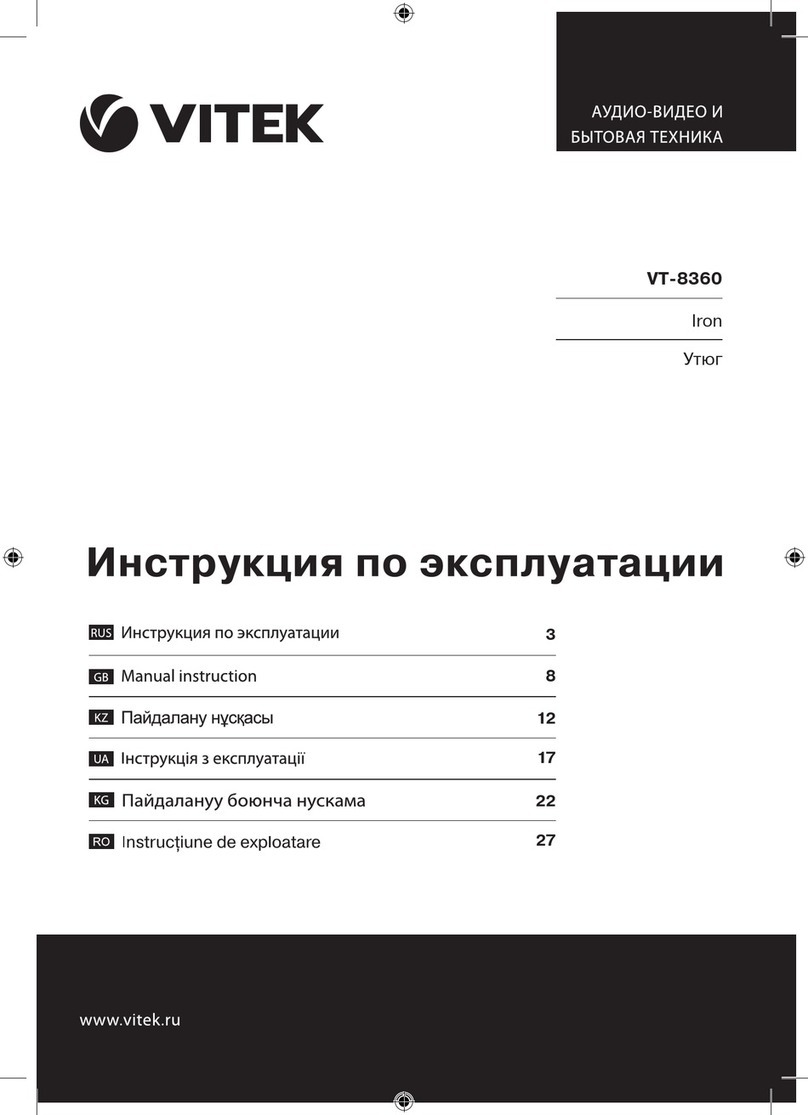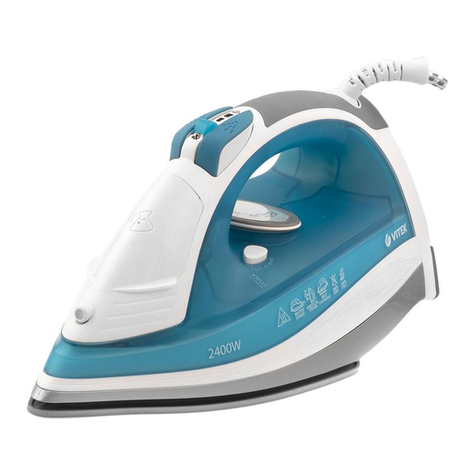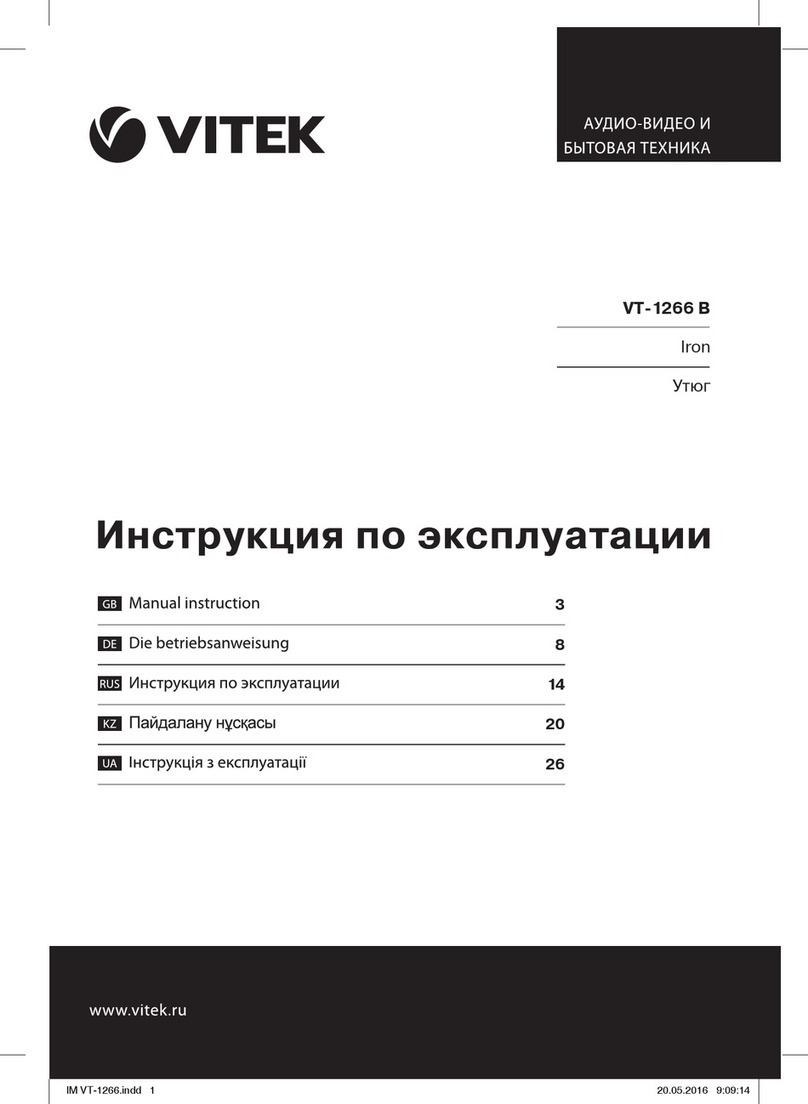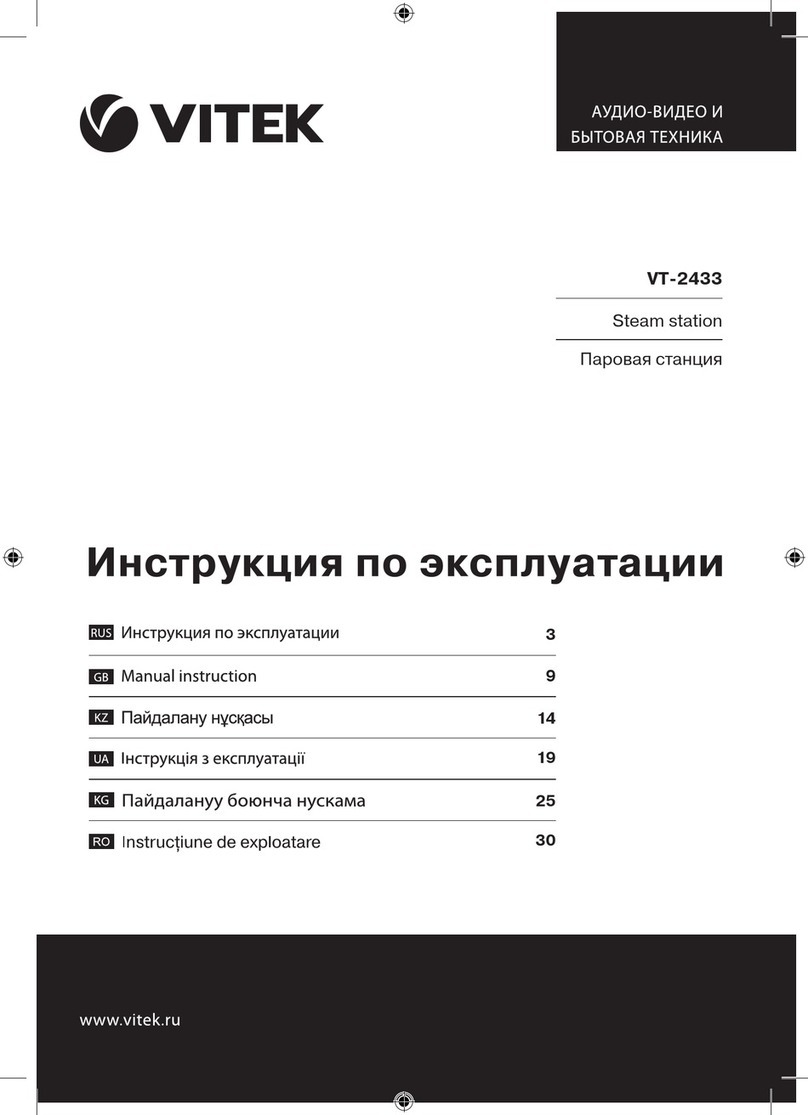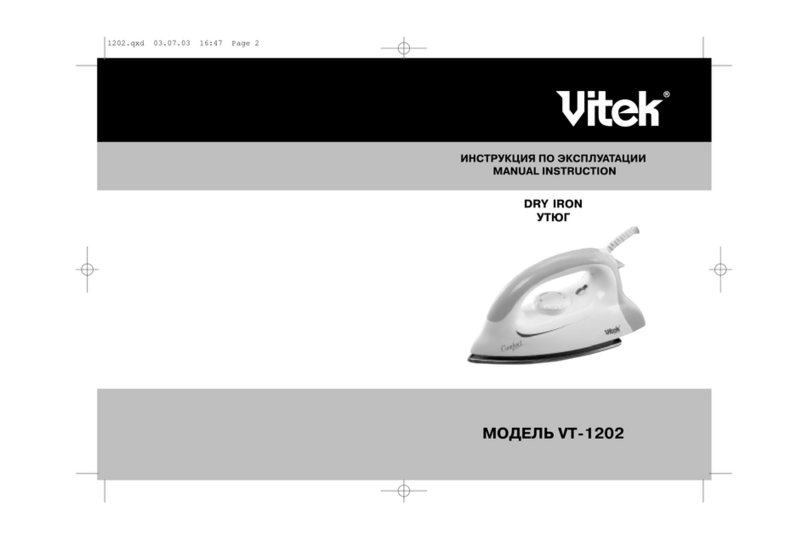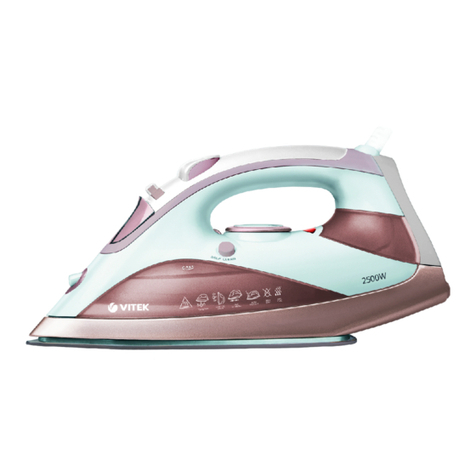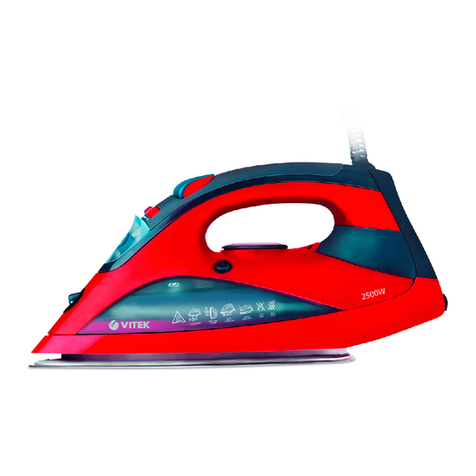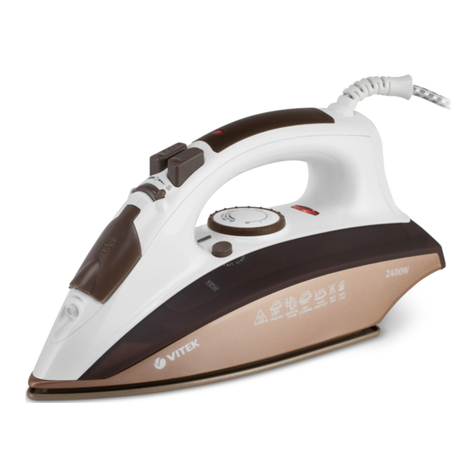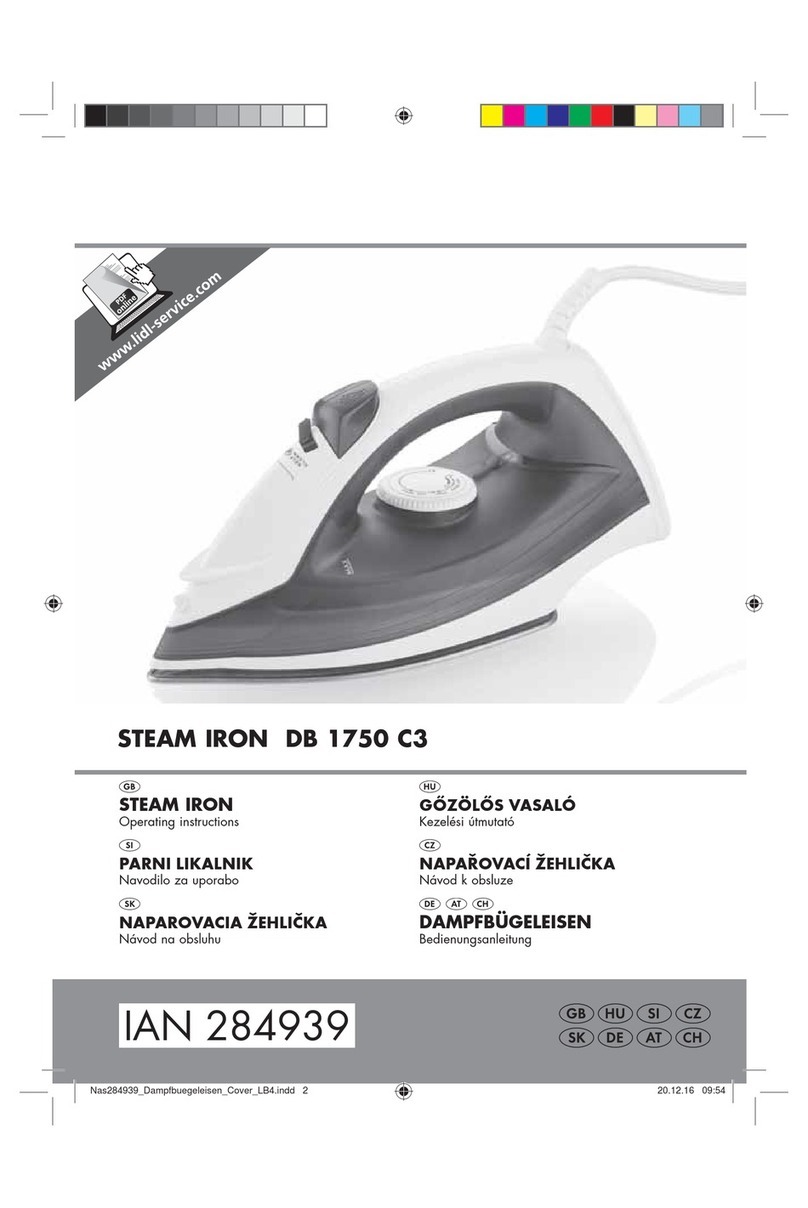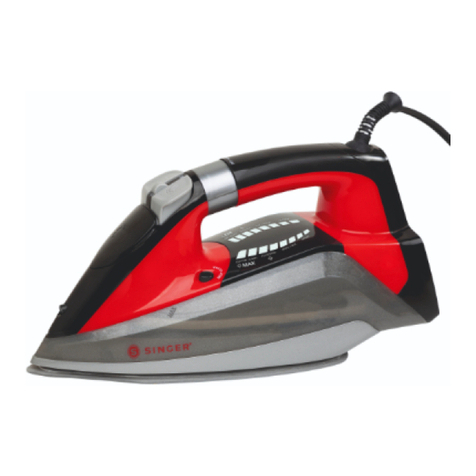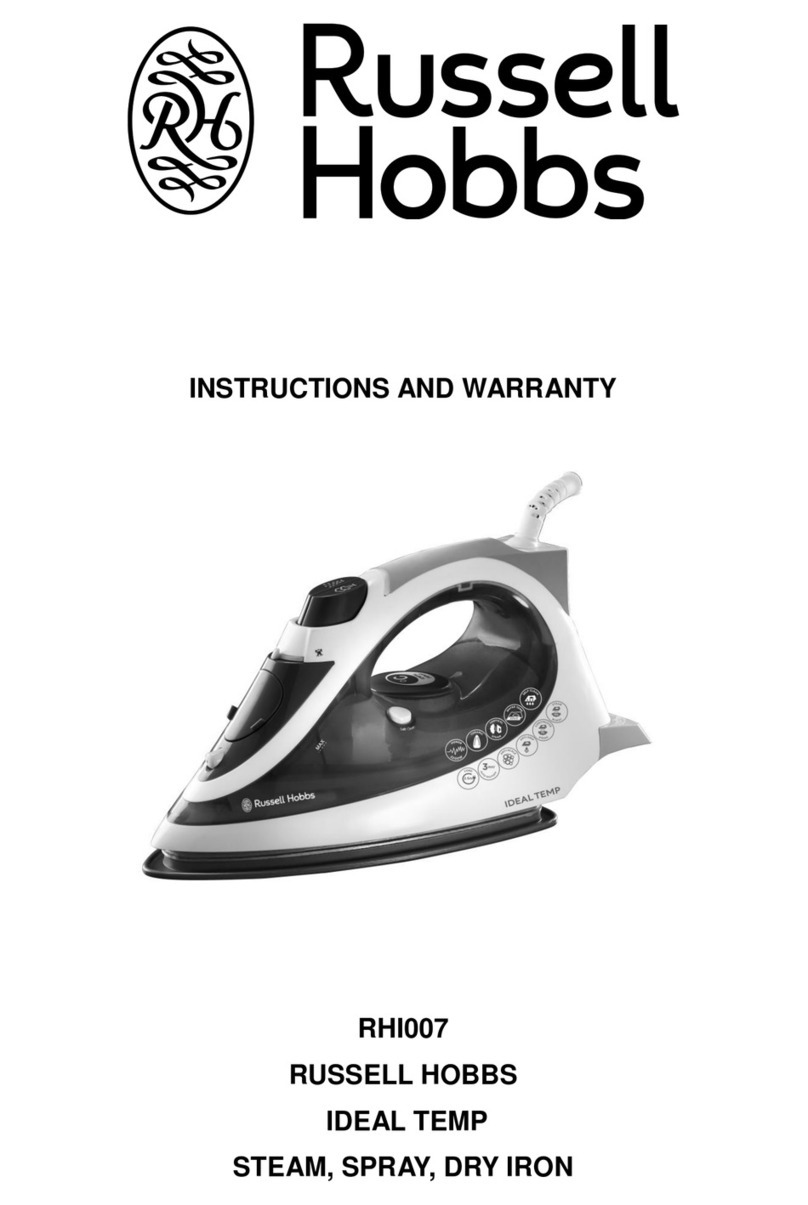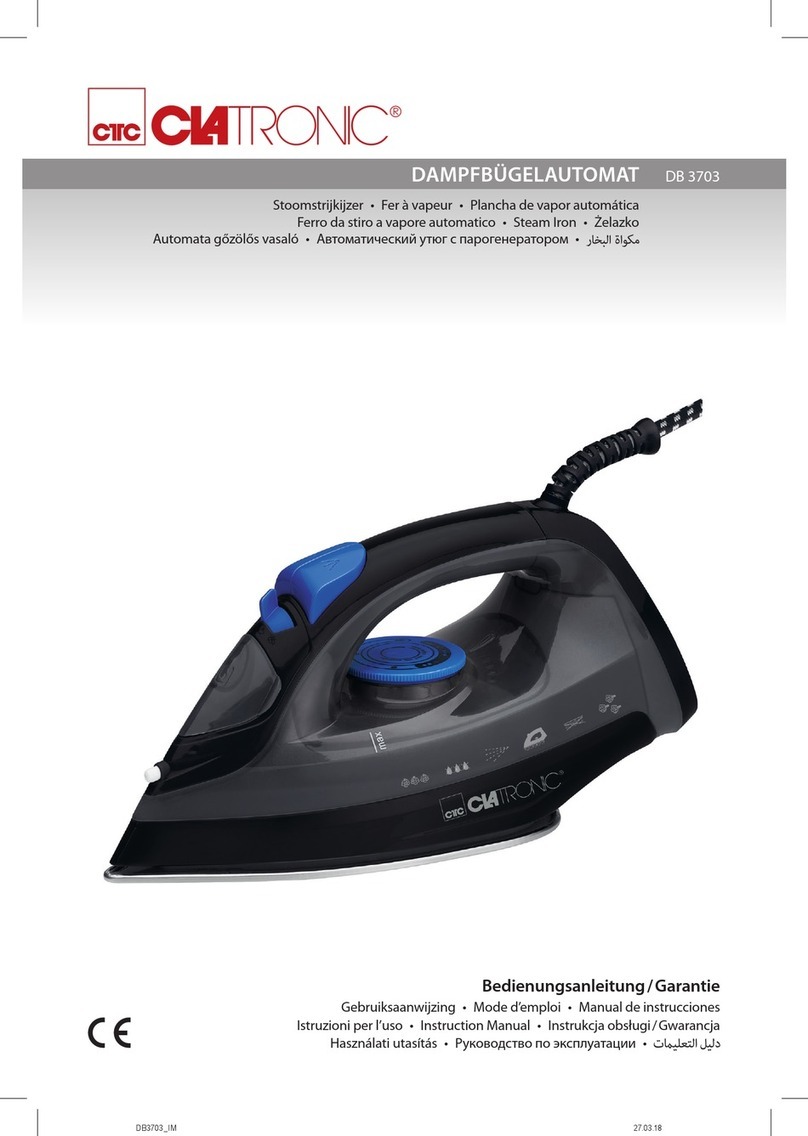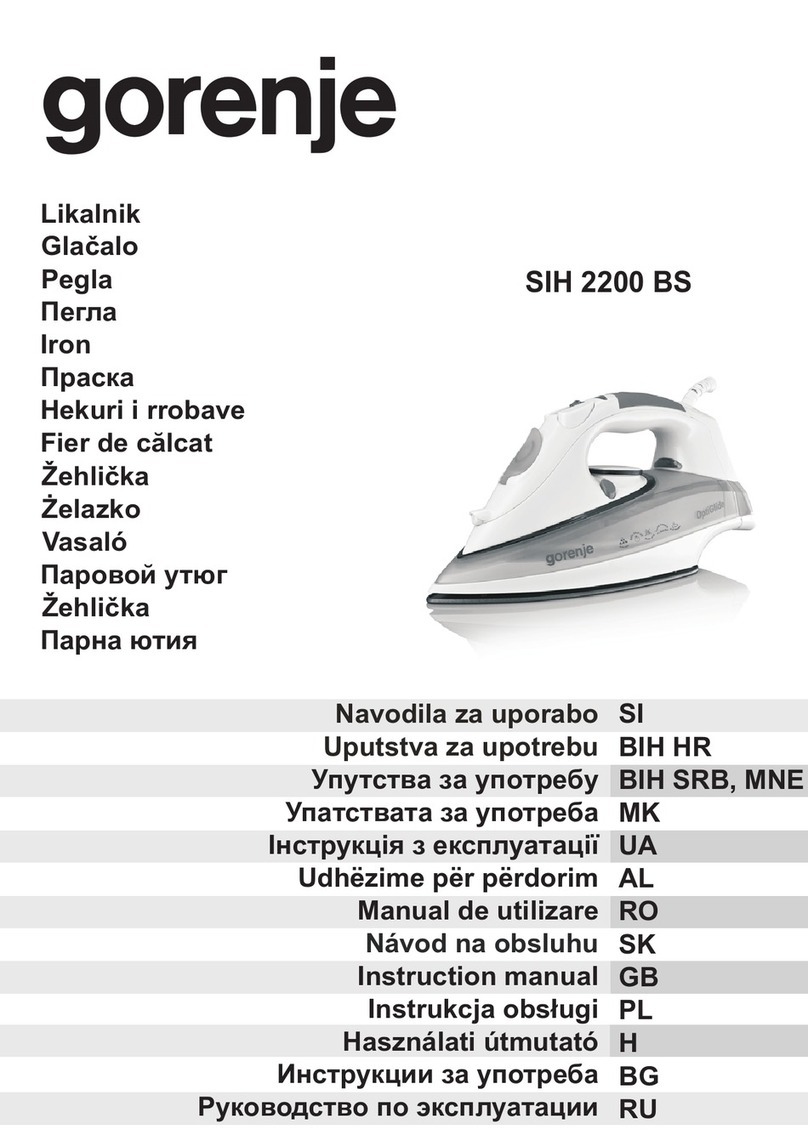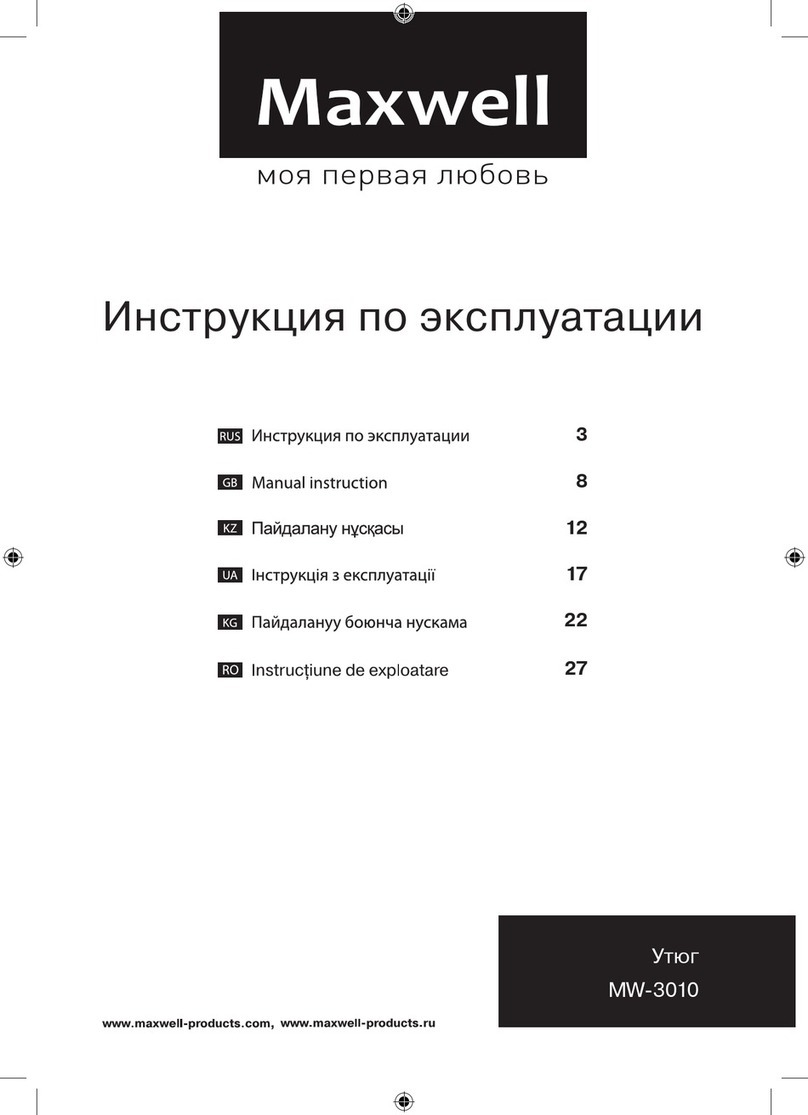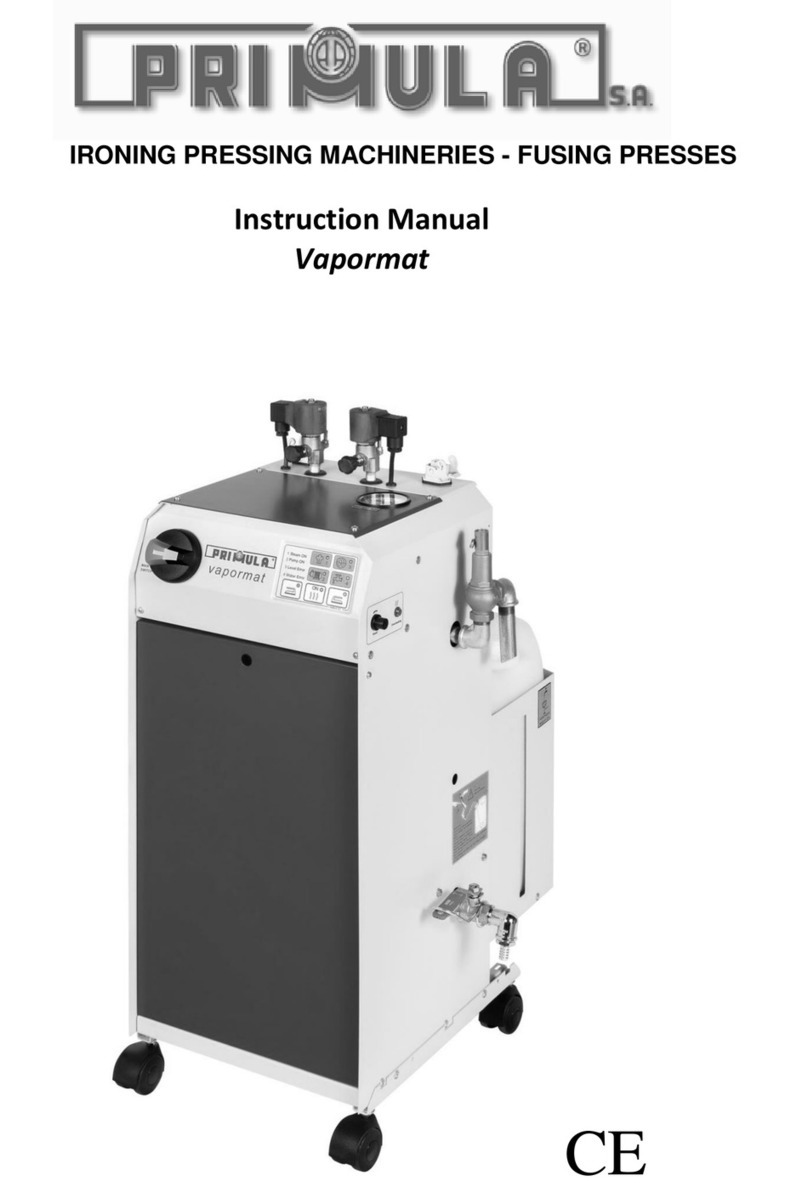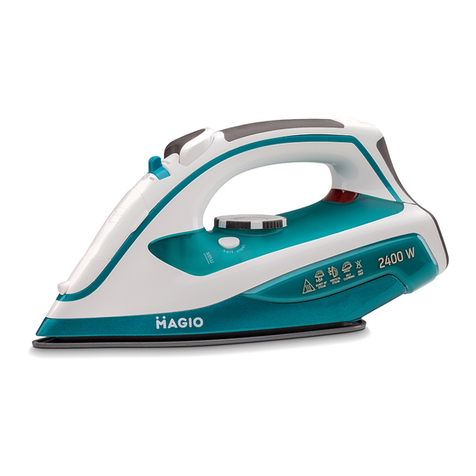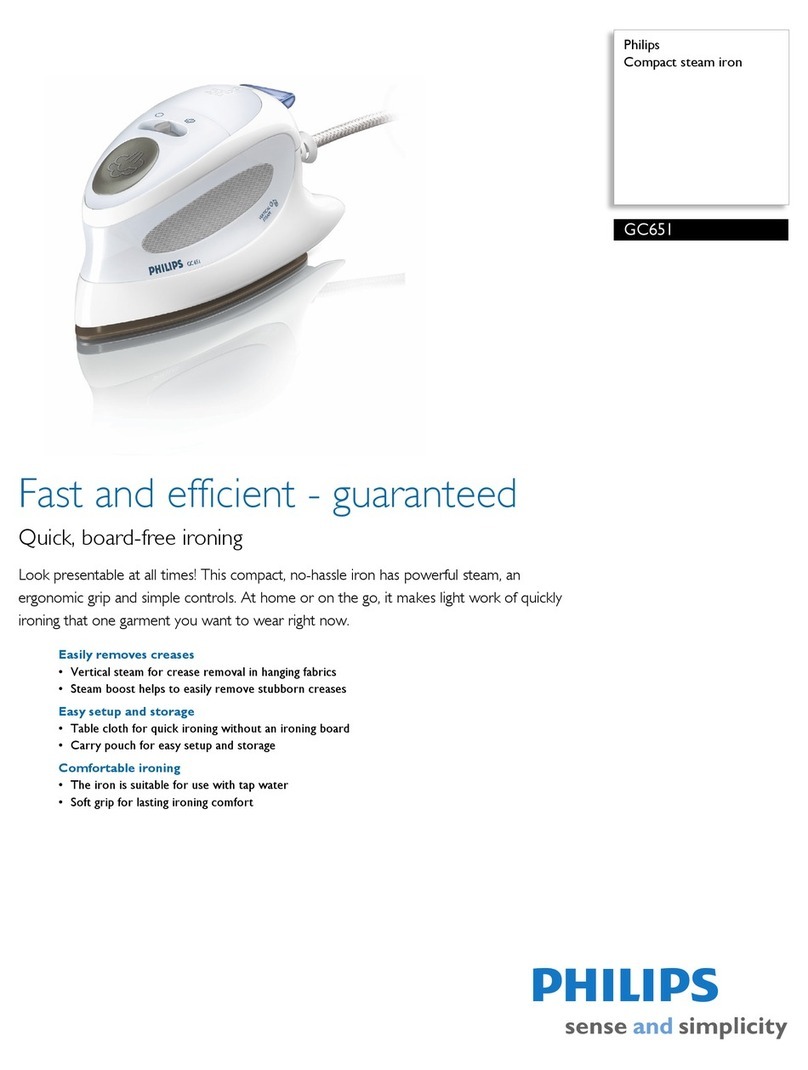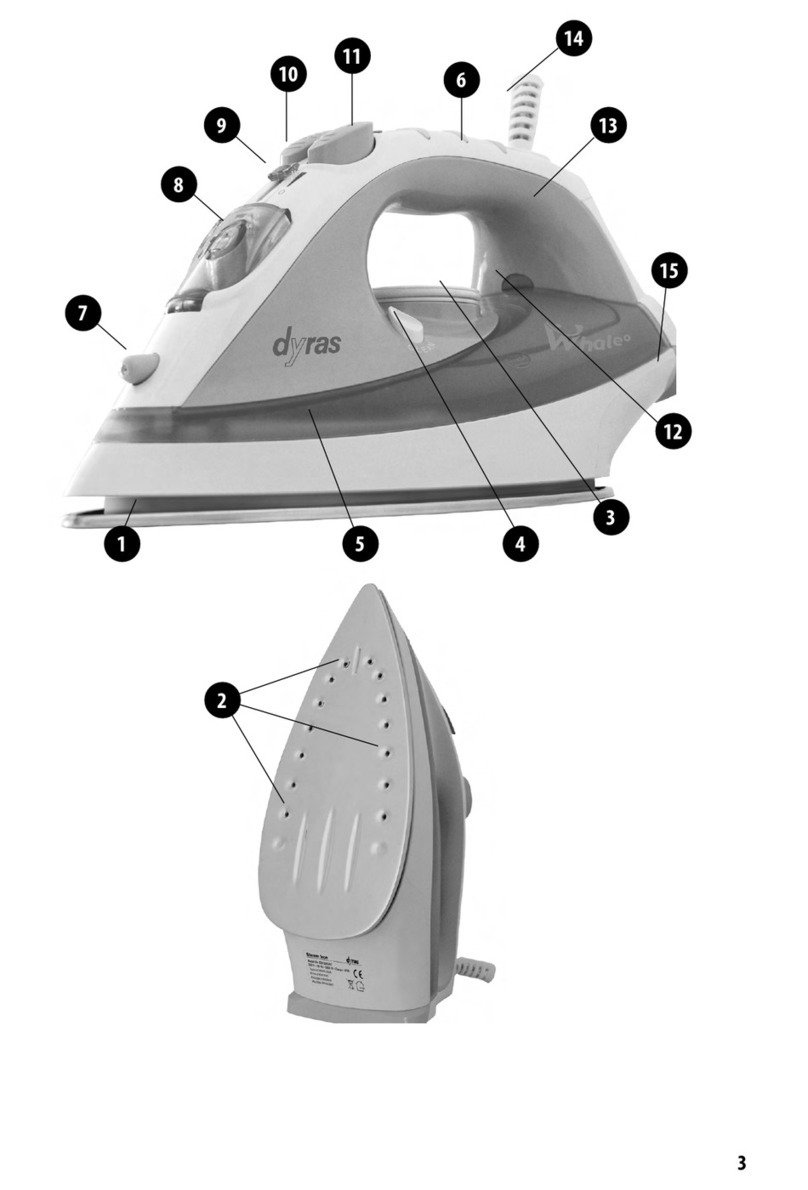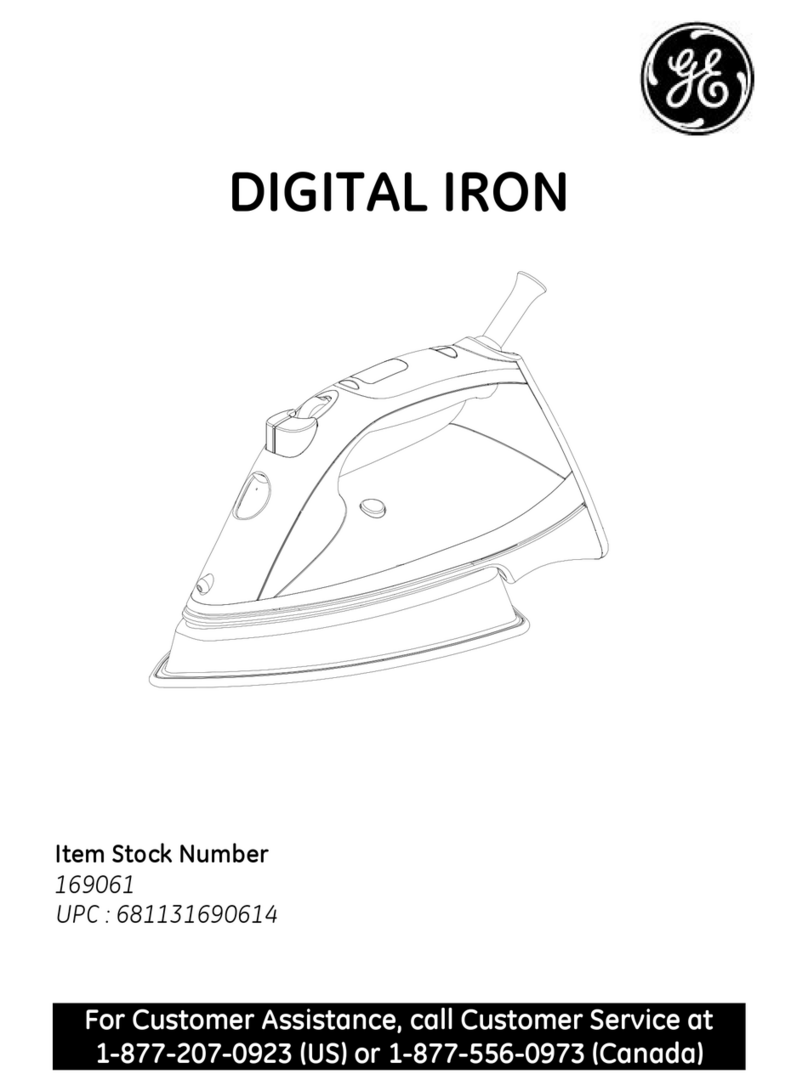
6
CHOICE OF WATER
• To fill the water tank use regular tap water.
If the water is hard then it is recommend-
ed to mix it with distilled water at a ratio
of 1:1, if the water is very hard, mix it with
distilled water at a ratio of 1:2 or use only
distilled water.
Note:
Do not fill the water tank (10) with scent-
ed liquids, vinegar, starch solutions,
descaling reagents, chemical substanc-
es etc.
FILLING THE WATER TANK
Make sure that the iron is disconnected from
electrical power before filling it with water.
• Set the steam release regulator (3) to the
position of steam vapor OFF.
• Open the water tank lid (2).
• Fill the water tank with water (10). Close
the lid (2).
Note:
• Do not fill it with water above MAX. in-
dication.
• If you need to refill the water tank dur-
ing ironing, turn off the iron and unplug
the power cord from the outlet.
• When you finish ironing, open the wa-
ter tank lid (2) and pour out the re-
maining water.
IRONING TEMPERATURE
Before ironing test the heated iron on the old
cloth to be sure that the iron soleplate (13)
and the water tank (10) are clean.
• Always check the recommended iron
temperature indicated on the tag before
ironing.
• If the tag does not list the recommended
ironing temperature, but you know the
type of fabric, then use the following table
to determine the proper temperature.
• This table is only for smooth materials.
Fabrics of other types (crimped, raised
etc.) are best ironed at low temperature.
Determination of Fabric type/
temperature
•Synthetics, nylon, acryl, polyester
(low temperature)
•• Silk/wool (medium temperature)
••• Cotton/linen (high temperature)
• First sort items by ironing temperature:
wool with wool, cotton with cotton etc.
• The iron heats up faster than it cools
down. For this reason it is recommended
to begin ironing at low temperature (for in-
stance synthetic fabrics). After that, move
to higher temperature ironing. Cotton and
linen should be ironed after all the others.
• If an item is made from a mix of fabrics,
then the iron should be set for the fabric
with the lowest ironing (for instance if an
item is made from 60% polyester and 40%
cotton, it should be ironed at the tempera-
ture used for ironing polyester “•”).
• If you cannot define the fabric the item is
made from, find a place on it that is hidden
while wearing and, on practice select the
ironing temperature (always start at the
lowest and gradually raise it until you get
the desired result.)
• Corduroy and other fabrics that start
glossy quickly should be ironed strictly in
one direction (along the lines) with slight
pressure.
• To avoid appearance of glossy spots on
the synthetic and silk fabrics, iron them
back-side.
SETTING THE IRONING TEMPERATURE
• Place the iron on the base (8).
• Insert the power plug into the outlet.
• Set the temperature regulator (11) to the
required ironing temperature: “•”, “••”,
“•••” or “max” (depending on the type
of fabric), the (9) indicator will light up.
• When the soleplate temperature (13)
reaches the desired temperature value,
the (9) indicator will go out, you can start
ironing.
VT-1238_IM.indd 6 14.10.2013 14:17:16


